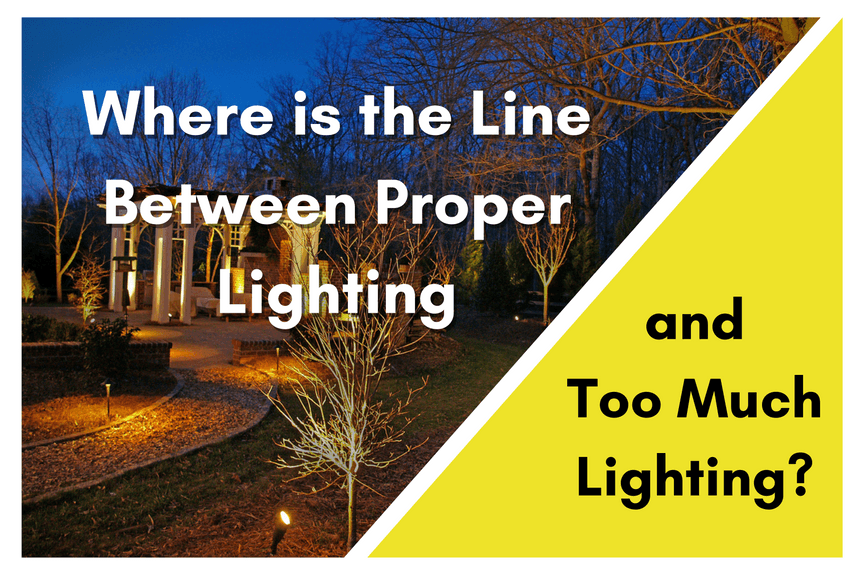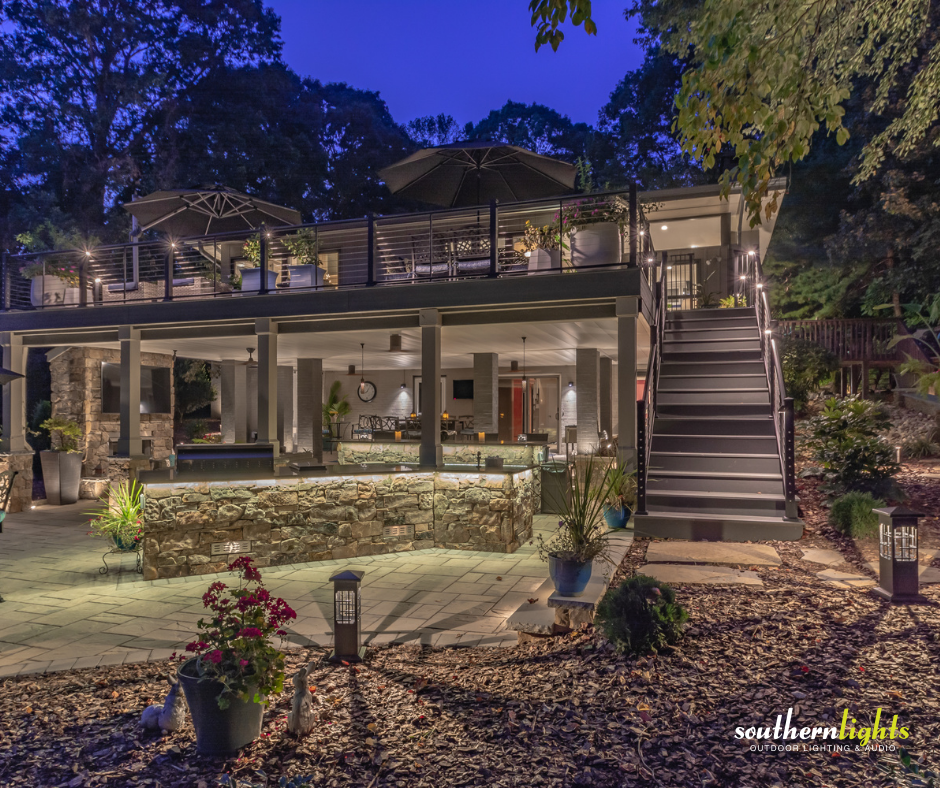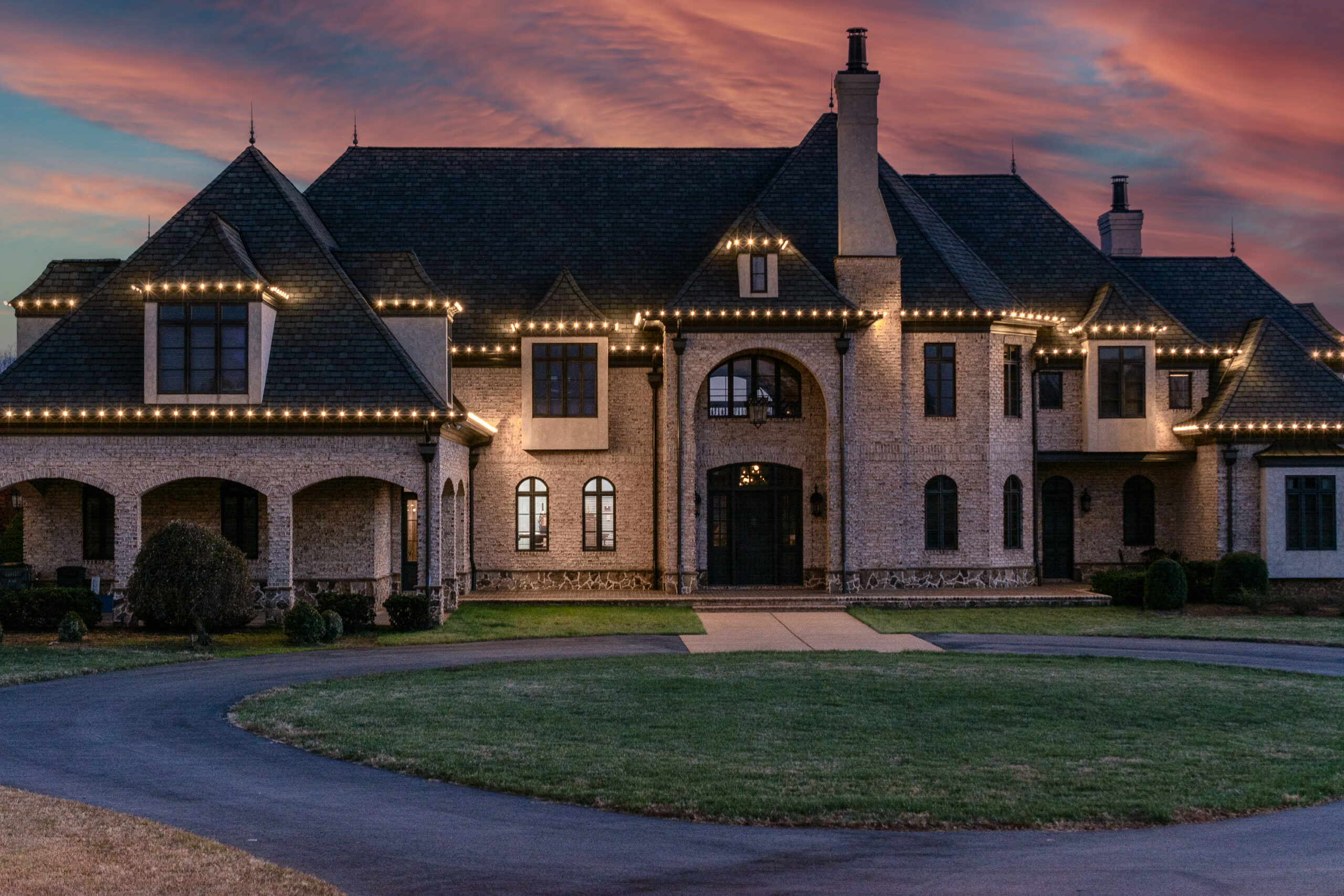This is one of the most important things to consider when illuminating your landscape. When does your lighting go from being appropriate to being excessive? It has been stated that under-lighting is as good as non-existent and excessive lighting poses a lot more harm than good. I’ve said it before, but we’ve all been blinded by the ubiquitous garage corner floodlight, and that can be dangerous. So how do you find the right balance to make for the proper lighting of your landscape? The answer is both art and science.
The output of a lamp is actually measured in lumens, but we still often refer back to “watt equivalent”. Most outdoor fixtures have a 10 to 20 watt equivalent output. Contrast that to indoor bulbs, which are rarely less than 40 watt equivalent, and frequently up to 100. As I’ve mentioned many times before, LED lights can accomplish the same amount of lumens with a much lower wattage consumption and therefore less energy cost, less heat generated, and less maintenance cost than traditional lights.
When it comes to outdoor lighting, believe it or not, less is more. As it turns out, our eyes adjusts to darkness relatively quickly and a full moon’s light is just enough to move about after dark pretty comfortably (think about how some nights you go outside when there’s a full moon—it’s beautiful, and it is amazing how much you can actually see!) So we use that as a professional guide. But of course, each job has its design differences—with different features to highlight, and different safety requirements.
The major aim of outdoor lighting design is to illuminate your landscape in such a way that would be enough to ensure your safety while also adding to its aesthetic appeal. But not to turn your landscape into an airstrip, or a carnival atmosphere! That is part of the art of lighting. Never compare a home to a commercial property. They have different purposes, different needs and different restrictions; so their lighting will be very different.
In addition to the output of the lamps, their placement is also key: safety, aesthetics and consideration for your neighbors all come into play. If a light makes your tree look gorgeous, but it happens to shine right into your neighbor’s window, they probably won’t appreciate that, and come Christmas you won’t be getting any gifts from them! Look at your house’s lighting from your neighbor’s perspective, and make sure you aren’t being un-neighborly.
Finally, too much outdoor lighting is “light pollution.” Light pollution means we see fewer of the beautiful stars in the sky and it can be hazardous to animals as well as adversely affect our sleep. Many towns and neighborhoods have adopted Dark Sky restrictions. It is not difficult to have a well-lit home and still meet Dark Sky requirements. (Check out our blog on Guilford County Dark Sky Requirements here)
Many of these concerns are easily addressed by utilizing a certified landscape lighting technician. He or she will have the training, knowledge and experience to get you just the right amount of light to have a beautiful and safe home, without under-lighting or excessive lighting.
Located in Summerfield, NC Southern Lights- Architectural and Landscape Lighting serves properties and property management companies throughout the state of NC including Greensboro, High Point, Jamestown, Burlington, Reidsville, Oak Ridge, Brown Summit, Winston-Salem, Clemmons, Raleigh, Charlotte, Kannapolis, Salisbury, Gastonia, Matthews, etc.
Southern Lights has installed hundreds of outdoor landscape lighting systems and carries more certifications than anyone in the state. We specialize in lighting designs and service everything we install as well as lighting systems installed by others. With attention to detail and a solid knowledge of design, Southern Lights is the leading outdoor landscape lighting firm in the state of NC and beyond. See why our clients choose us. Contact us today by web (online form) or phone 336-451-4969.




